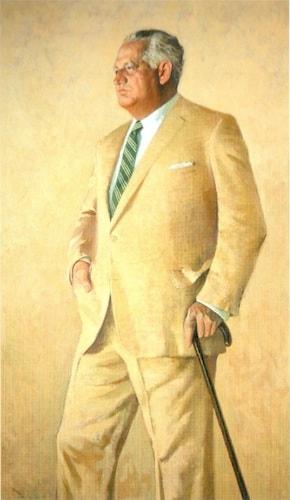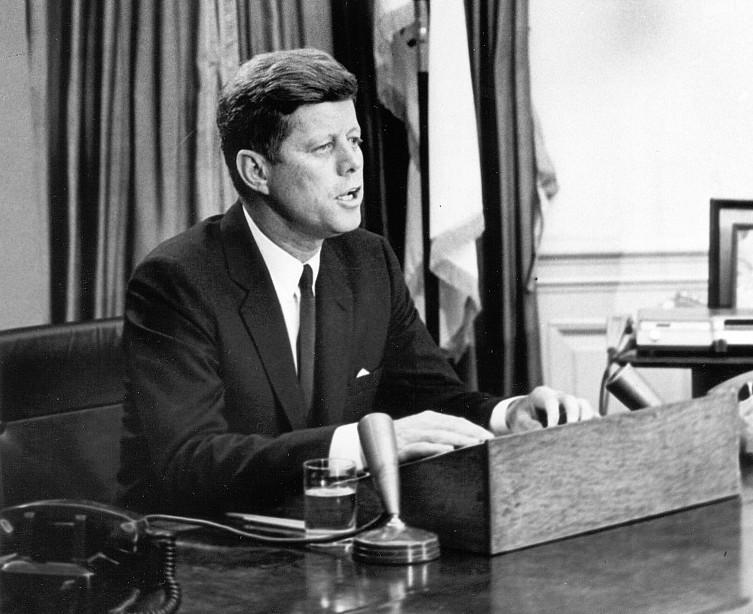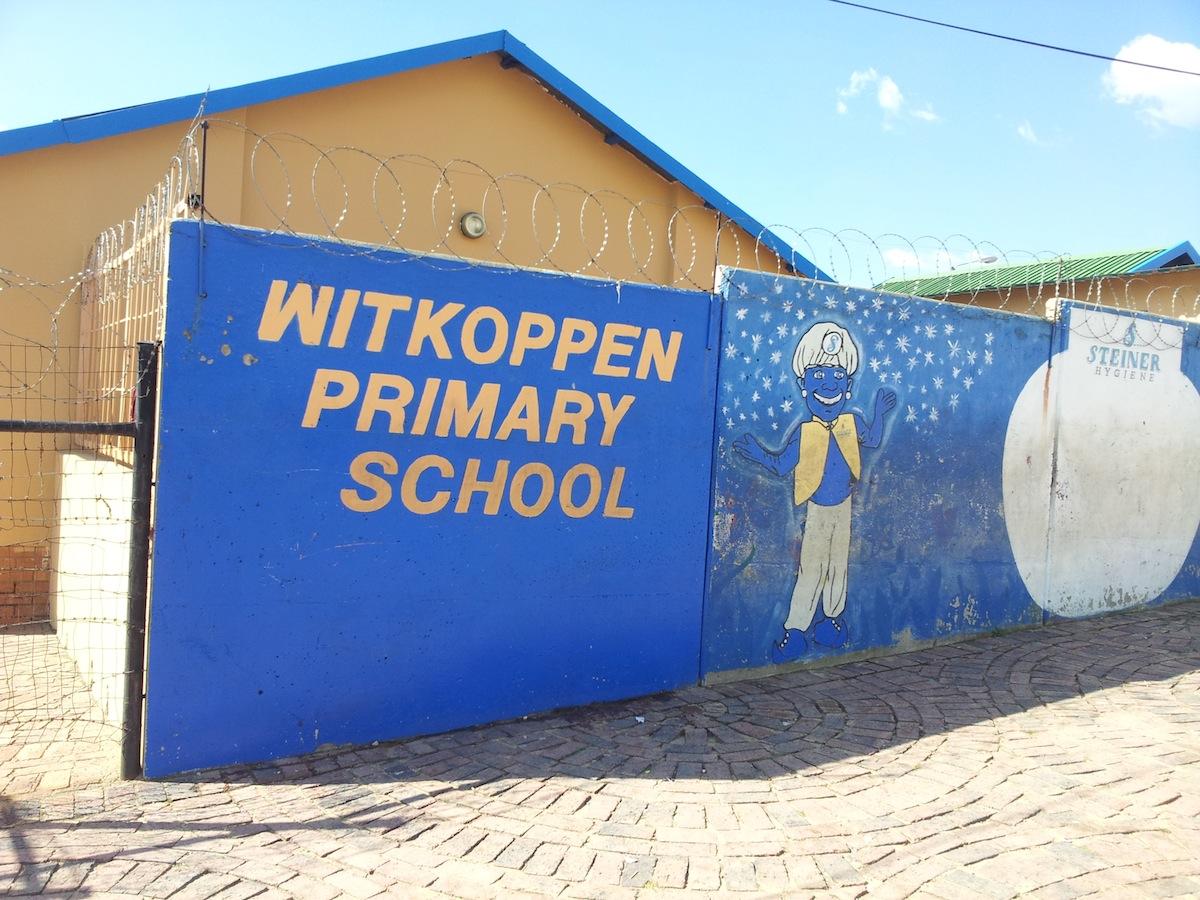Disclaimer: Any views expressed by individuals and organisations are their own and do not in any way represent the views of The Heritage Portal. If you find any mistakes or historical inaccuracies, please contact the editor.
In 1978, the following article was published in the Annual Magazine of the Sandton Historical Association and has been lightly edited for re-publication. It was written by Agnes Kulenkampff (née Pedlar), an enthusiastic contributor to the Sandton Historical Association for many years. A librarian at the Transvaal Education Department, Agnes died very young in March 1991.
Sandton was founded as a separate municipality in 1969. The area is now within the enlarged city of Johannesburg. See also
See also: Memorial to President John F Kennedy in Sandton
Sandton is a young municipality. Most of its 18 modern schools were built for the children of white residents who had settled fairly recently in the area. Shortly after the end of the South African War, Rivonia Primary School (the successor to Rietfontein 15 School) was the first to instruct the children of the outlying small farmers. Witkoppen Farm School was the next, in 1927, to try to spread the use of the three Rs.
An Englishman named George Mason farmed along the old Pretoria Road just past Fourways in what was a very rural and sparsely populated area. Mason asked his maid, Selina Moshimane, to sound out the wishes of the local people and they welcomed the idea of opening a school. Mason consequently donated about two acres to the “local native people”. The land was bequeathed in perpetuity to them in his Will.
The Anglican Board of Management controlled the new school because Africans could not own land in “white” areas at that time. At first, two rooms in Mason's old house were used as temporary classrooms. The uncertified founder teacher was H.K. Mopoeloa. He must have been remarkably keen – he had to teach without syllabus, without workbooks, without reference books, or any texts.
Mason and two of his farm labourers built the first classroom, and he and his wife attended the dedication of the school on 14 April 1943. This was the feast day of St Justin to whom the school is dedicated. The Right Reverend Geoffrey H. Clayton, Bishop of Johannesburg, celebrated Holy Communion for the large crowd which attended the dedication of what had become a formal mission school. The school then boasted two teachers.
Sketch of Witkoppen School (via Sandton Historical Association)
However, with the change of government in 1948, the Bantu Education Act came into effect in 1953 (Act No. 47). This enforced racial and ethnic segregation, giving the state full control of the syllabus and the employment of teachers. The Bishop of Johannesburg, at that time the Right Reverend Ambrose Reeves, refused to condone the application of apartheid education in his diocese and opted to close the school. Mr Jack, the Principal, called a meeting of the parents and, unanimously, they voted to maintain the school, even under the new dispensation. Mrs Shapiro, the School Manager, took a petition from the parents to Pretoria. Dr Hendrick Verwoerd was then Minister of Bantu Affairs, and he agreed to save the school by recognizing it as a ‘’farm school”. The Anglican Church therefore lost control of the school, and thereafter the government paid a portion of the teachers’ salaries. By the time that Mrs Shapiro resigned as Manager, the school had grown to three classrooms, a Chapel, and a tiny staffroom. When Mr Jack retired as principal, Mr Samson Matlou succeeded him.
An early Witkoppen resident who lived nearby, Mrs Elaine Blakeway, took an interest in the school and became its friend. In the early 1960s she introduced the American business and mining tycoon Charles W. Engelhard Jr., and his wife, Jane, to the school. Engelhard was so impressed that he endowed the school with many thousands of rands. A separate house for the headmaster and his family was constructed as previously they were sharing a house with another family. Engelhard also donated a new cottage for the two male teachers who had shared a shed with a mud floor.
Portrail of Charles Engelhard (All Engelhard)
In 1962 Dr Tony Brink, Professor of Geology at the University of the Witwatersrand, became School Manager. He introduced the Bryanston Round Table to the school, and they built a new classroom and a small cottage for women teachers. All the teachers lived on the premises.
The Engelhard family happened to be in South Africa when, on 22 November 1963, United States President John F. Kennedy was assassinated. The school’s Principal, Mr Matlou, wrote to Engelhard to sympathise at the loss of his friend. Engelhard asked what the school needed most. And, as a memorial to Kennedy, Engelhard generously paid for the John F. Kennedy Memorial Block which comprised a chapel, more classrooms, and a clinic. Dr Louis Smuts, a daughter of General Smuts, supervises the clinic which treats about 400 patients a week – a vast improvement on the facility set up in the Masons vacant house years ago.
President Kennedy in 1963 (Wikipedia)
Tony Brink also started the bursary fund to help pupils who want to study after passing through primary school. They are provided with grants to attend a boarding school in the “homelands”. The present principal is Mr Samson Matlou and he and his wife, Eugenia, were appointed to the school in 1957. They have given outstanding service to their community. Eugenia Matlou was runner-up in the “Woman of the Year” competition organised by The Star newspaper – she relieved her husband who was ill and ran the whole school for a year. During the past 20 years, the Matlous have encouraged any worthwhile activity to improve the school. For example, in 1958 Mr H.E. Hudson-Reed, from St Stithian’s College, began a Sunday School, while in 1959 the local women built another classroom under the Self-Help scheme. St Stithian’s erected the roof of this classroom and donated blackboards.
Witkoppen also benefited from the African Feeding Scheme: children who had sometimes fainted from hunger or cold after walking miles to the school found that schoolwork was much easier after eating a good meal. The school is a member of the Valley Farm Schools Association which encourages the growing of fruit trees, garden flowers, and vegetables. Sangomas have met at Witkoppen school to support GROW, and advice on the proper use of the soil has been sponsored by the Organic Soil Association.
The school has been blessed with benefactors since its inception. Gifts have varied from a half-bag of peanuts to a Christmas party for the pupils. Activities vary from work for the Sandton Foundation, to purposeful play as Boy Scouts led by Liz Harrison.
This is certainly one school that has lived up to its motto “From a seed small seed we will grow”.
Entrance to Witkoppen School (The Heritage Portal)
Thank you to Jane Carruthers for finding, transcribing and editing this article.
Main image: Sketch of the Witkoppen School buildings via the Annual Magazine of the Sandton Historical Association.
Comments will load below. If for any reason none appear click here for some troubleshooting tips. If you would like to post a comment and need instructions click here.



